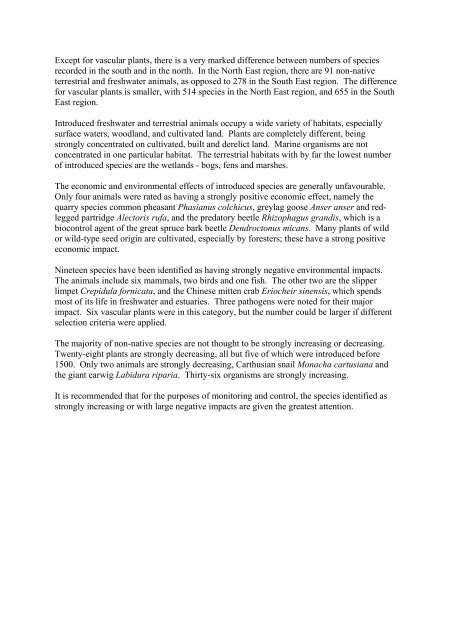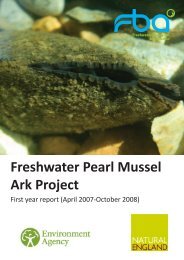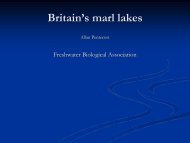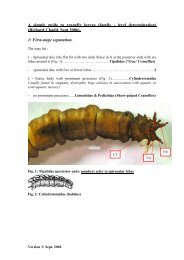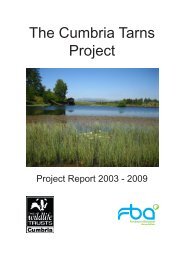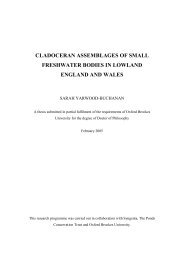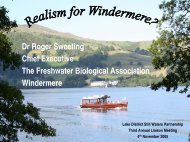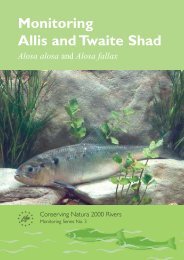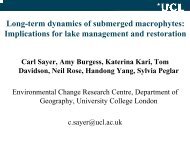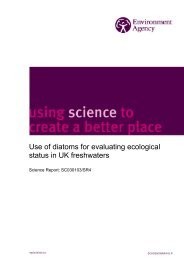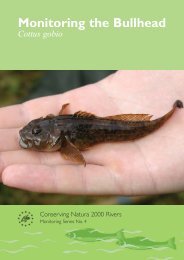EN REPORT (SCIE) F&B (3529b) - FreshwaterLife
EN REPORT (SCIE) F&B (3529b) - FreshwaterLife
EN REPORT (SCIE) F&B (3529b) - FreshwaterLife
Create successful ePaper yourself
Turn your PDF publications into a flip-book with our unique Google optimized e-Paper software.
Except for vascular plants, there is a very marked difference between numbers of species<br />
recorded in the south and in the north. In the North East region, there are 91 non-native<br />
terrestrial and freshwater animals, as opposed to 278 in the South East region. The difference<br />
for vascular plants is smaller, with 514 species in the North East region, and 655 in the South<br />
East region.<br />
Introduced freshwater and terrestrial animals occupy a wide variety of habitats, especially<br />
surface waters, woodland, and cultivated land. Plants are completely different, being<br />
strongly concentrated on cultivated, built and derelict land. Marine organisms are not<br />
concentrated in one particular habitat. The terrestrial habitats with by far the lowest number<br />
of introduced species are the wetlands - bogs, fens and marshes.<br />
The economic and environmental effects of introduced species are generally unfavourable.<br />
Only four animals were rated as having a strongly positive economic effect, namely the<br />
quarry species common pheasant Phasianus colchicus, greylag goose Anser anser and redlegged<br />
partridge Alectoris rufa, and the predatory beetle Rhizophagus grandis, which is a<br />
biocontrol agent of the great spruce bark beetle Dendroctonus micans. Many plants of wild<br />
or wild-type seed origin are cultivated, especially by foresters; these have a strong positive<br />
economic impact.<br />
Nineteen species have been identified as having strongly negative environmental impacts.<br />
The animals include six mammals, two birds and one fish. The other two are the slipper<br />
limpet Crepidula fornicata, and the Chinese mitten crab Eriocheir sinensis, which spends<br />
most of its life in freshwater and estuaries. Three pathogens were noted for their major<br />
impact. Six vascular plants were in this category, but the number could be larger if different<br />
selection criteria were applied.<br />
The majority of non-native species are not thought to be strongly increasing or decreasing.<br />
Twenty-eight plants are strongly decreasing, all but five of which were introduced before<br />
1500. Only two animals are strongly decreasing, Carthusian snail Monacha cartusiana and<br />
the giant earwig Labidura riparia. Thirty-six organisms are strongly increasing.<br />
It is recommended that for the purposes of monitoring and control, the species identified as<br />
strongly increasing or with large negative impacts are given the greatest attention.


